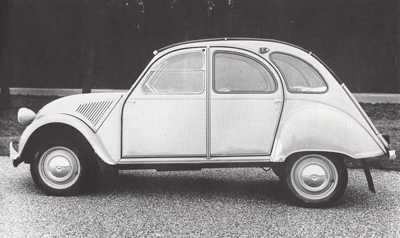|
The
Sociťtť Belge des Automobiles CitroŽn S.A. was formed on 31st January
1924 and was the second such enterprise to be set up by Andrť CitroŽn
(the first being the factory at
Slough in England).
Its registered office was at rue de l'Amazonie, 47-51 at Saint-Gilles
where the offices and factory occupied an area of 2 500 m2 but the
massive increase in production and sales in Belgium soon meant that the
company was obliged to seek larger premises. In 1926, the company set
up a new factory in Forest/Vorst with an area of 6 632 m2 and this was
followed by the establishment of a huge showroom in bvd. Adolphe Max
and another in rue Emile Claus. In 1934, the company moved its
administration, sales, after sales and technical development operations
to a 16 500 m2 complex at Place de l'Yser/Ijzerplein alongside the
Brussels - Antwerp Canal in the centre of Brussels. Designed by Alexis
Dumont (1877-1962), the building was the architectural expression of
the avant-garde techniques employed by CitroŽn and is still uded as the
HQ of CitroŽn Belux
Between 1924 and 1940, more than 30 000
vehicles had been sold on the Belgian market. In 1940, the company was
evicted from its premises at the Place d'Yser by the occupying German
forces who remained there until 1944. The premises were badly damaged
by the blowing up of a nearby bridge and were left largely unrepaired
for six years.
During the occupation, the Forest factory became the registered office
of the company and ceased all manufacturing, confining itself to the
repair of vehicles and conversion to "Gazogene" and acetylene fuel.
On 11th and 12th May 1944, the factory was bombed by Allied aircraft
resulting in the almost total destruction of the paint shop.
British forces requisitioned the factory and its assets but despite
this, in 1944 and 1945, the factory was repaired and in 1946,
production re-commenced with 1 536 vehicles being built in 1946, 4 098
in 1947 and 4 955 in 1948.
Partial rebuilding of the Place d'Yser premises meant that the
administration returned there in 1947 but it was 1959 before all the
damage was fully repaired.
The Forest factory built most of the models that were built in Paris
including the 5CV, B12, B14, Traction Avant, DS, 2CV, Dyane, Mťhari,
GS, LNA and Visa, as well as Panhards - although adapted to local
market and legal conditions. A good proportion of production was
exported to Luxembourg and the Netherlands as well as to the remnants
of Belgium's African empire. From 1970, the factory specialised in
making 2CV and 3CV camionettes.
Annual production
dropped from a peak of 73 175 in 1972 to 38 222 in 1980 and between
1948 and the factory's closure in 1980, a total of 1 074 661 vehicles
were built there.
|
|
Production
of the 2CV in Forest began in 1952 and by 1954, the Belgian
affiliate was producing specific models for the Belgian market - the
2CV AL replaced the 2CV Type A. Fitted with the 425 cm3
engine, the AL became the AZL. Readily
distinguishable from the AZ, it was fitted with "paperclip" front
bumper overriders, a chromed strip running down the bonnet and more
chrome around the door and window surrounds, wheel embellishers and
indicator lights fitted to the C pillars.
Below
as early as 1957, the Belgian factory offered a "top of the range"
version of the 2CV, the AZL3 or 2CV Limousine. Based on the
mechanics of the 2CV AZL, it was fitted with a six light body (in
France, customers had to wait until 1965 for this innovation).
|

